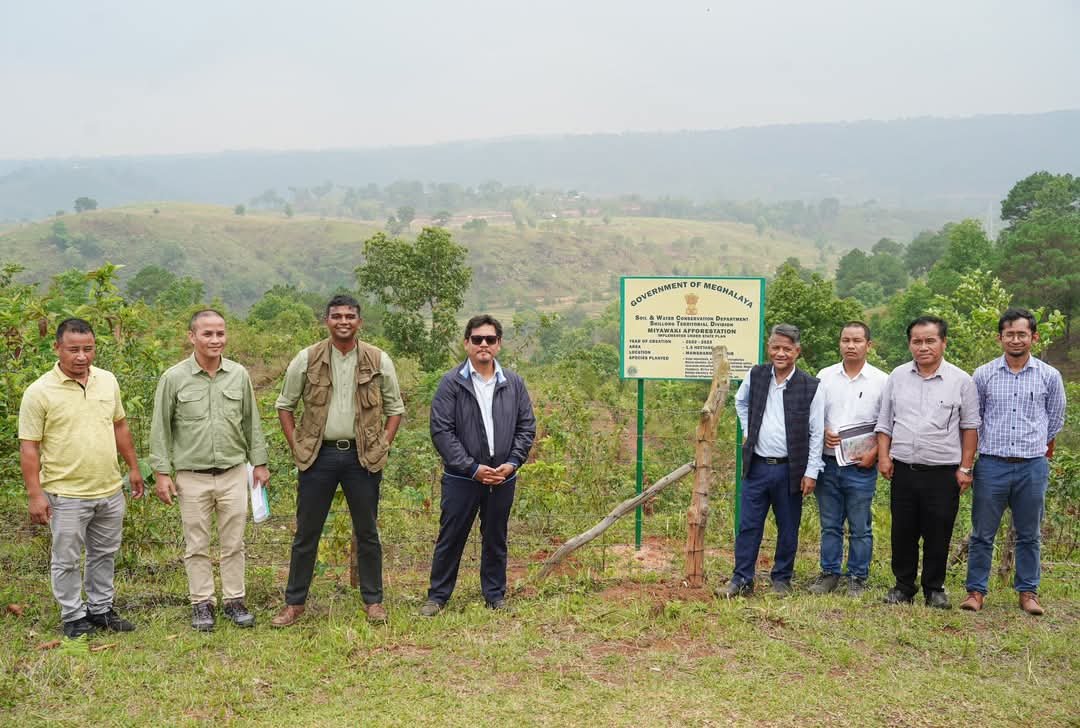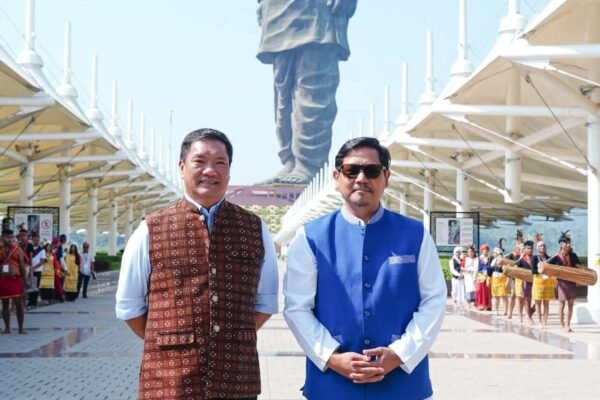Shillong, May 9: Meghalaya is employing the Miyawaki Forest method as part of its ongoing afforestation efforts to combat deforestation and restore green cover. Developed by Japanese botanist Akira Miyawaki, this technique involves planting native tree species in close proximity to foster rapid growth and create dense, self-sustaining forests.
The initiative is led by the Soil and Water Conservation Department of the Government of Meghalaya, with significant support from Chief Minister Conrad K. Sangma, who has emphasized the need to address deforestation in the state. To further these efforts, the state has launched programs like Green Meghalaya and has partnered with various organizations to promote environmental conservation.
In addition to the Miyawaki method, the state is offering financial incentives through the Payment for Ecosystem Services (PES) program to encourage forest conservation.
On Thursday, Chief Minister Sangma visited a Miyawaki forest site in Mawsharoh, Ummir, in the East Khasi Hills, where a 1.5-hectare area is being transformed into a dense forest. This is part of a larger project that aims to cover 25,000 hectares across Meghalaya.
The Miyawaki method promotes faster growth of forests by planting trees closely together in multiple layers. This approach not only speeds up forest development but also requires less maintenance over time.
Local communities are playing an active role in planting and maintaining these forests, with the first Miyawaki plantation having begun three years ago in Garo Hills as a pilot project.
“The project will be expanded across the state as part of our main afforestation drive,” said Chief Minister Sangma.
The Miyawaki forests provide several environmental benefits, including carbon sequestration, improved air quality, climate change mitigation, and wildlife habitat creation. Meghalaya’s rich soil and favorable climate conditions make it an ideal location for the success of these dense forests.









